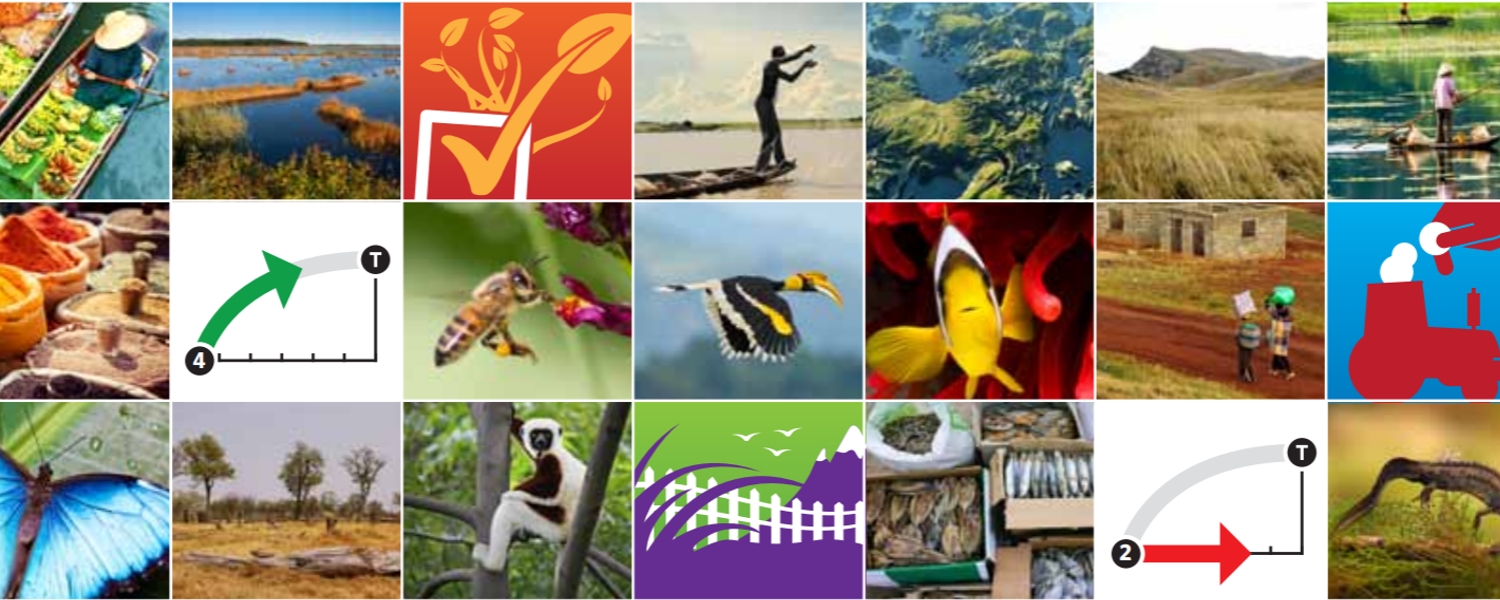Trends and predictions
Using predictive modelling to assess status, trends and the impacts of any potential changes
The GBIO provided the following summary:
Being able to model future trends in biodiversity under different conditions (such as the outcomes of particular policies or climate change) are key to sound decision making. The wealth of historical data that focus area B (Data) will unlock from the literature and museum collections, and the existing long-term ecological monitoring sites, provide a temporal dimension to the available evidence for our spatial models. Mobilizing all of these data will enable not only multiscale spatial modelling (D1) of current biodiversity patterns, but also to construct a series of historical models, at least for some taxonomic groups and for some regions and scales of detail. These models will in turn help us to identify trends, to explore the key drivers behind these trends and to predict responses to potential future changes. Having good predictive tools are a key element for the better management of biodiversity, so developing this component should be a matter of high priority.
A number of projects, such as the Wallace Initiative, ClimaScope, eHabitat and the Ermitage project, already use biodiversity data to explore the impacts of environmental changes on biodiversity, while the Digital Observatory for Protected Areas (DOPA) is looking at building interoperable modelling services for biodiversity. The next step will be to create a group equivalent to the Task Group on Data and Scenario Support for Impacts and Climate Analysis (TGICA) of the Intergovernmental Panel on Climate Change (IPCC) to establish the baseline data and methodologies, workflows and repositories needed.
In the short term, mechanisms are required to assess the suitability of integrated occurrence data for different species to support development of a series of historical distribution models, and to establish guidelines for the work in focus area A (Culture) and focus area B (Data) to maximize the suitability of the data for temporal modelling. In the medium term, work should focus on visualization of such models and on algorithms to explore the drivers behind apparent changes in biodiversity. In the long term, these insights should support development of tools to model predicted changes in biodiversity in response to human-induced pressures such as climate change, land use change and the expected impacts of invasive species on ecosystems.
The component areas identified in the GBIO Understanding layer represent the greatest challenges. Understanding of biodiversity patterns and processes is normally derived from studies based on data collected specifically to answer a given question. Large-scale aggregation of data may facilitate comparable findings in a wider range of situations and potentially on demand. Progress in this area will only be possible if many of the components in the other GBIO layers are implemented and operationalised to a high level. Data mobilisation and aggregation needs to be of sufficient completeness and coverage. Data quality issues need to be understood and managed through community processes. Different classes of biodiversity information need to be robustly combined with one another and with abiotic information sources. Beyond this, improvements are needed to modeled representations of biodiversity patterns so that confidence levels can be properly assessed. Assessing biodiversity trends will depend on understanding and measuring the state of natural systems at different times and places with sufficient rigour to detect change. Predicting the results of changes in climate or land use or management on biodiversity will require even more measurements to assess drivers.
Planning future approaches around Trends and Predictions requires a realistic assessment of the fitness of existing data resources and data management practices to support large-scale models. We can expect massive increases in some categories of data, particularly from monitoring based on environmental DNA and probably also based on remote sensed detection of some species. We need to understand the relative strengths and weaknesses of such sources in comparison to existing data streams. We need also to identify and prioritise complementary datasets which are required to maximise the information signal from heterogeneous aggregated data. A particular challenge will be finding practical approaches to include the results of specific local studies to assist with calibration of regional or global data.
Enormous investment is required in many of these areas, but the potential results are enormous benefits in planning long term conservation, land management and food security and in enabling governments to address targets such as the Sustainable Development Goals.
GBIC2 will include a working session to explore the challenges which may impede progress in these areas. The goal will not be to develop a multi-year roadmap and set of fully-refined priorities for building infrastructure for Trends and Predictions, although recommendations from the session will be taken forward for this purpose. The key goal in the context of GBIC2 is to understand the nature of the impediments which limit progress in this area towards the best possible international systems for monitoring trends and making predictions. Thus will enable the GBIC2 workshop to consider the best approach to address these impediments within the governance and the planning processes of an international coordination mechanism.
